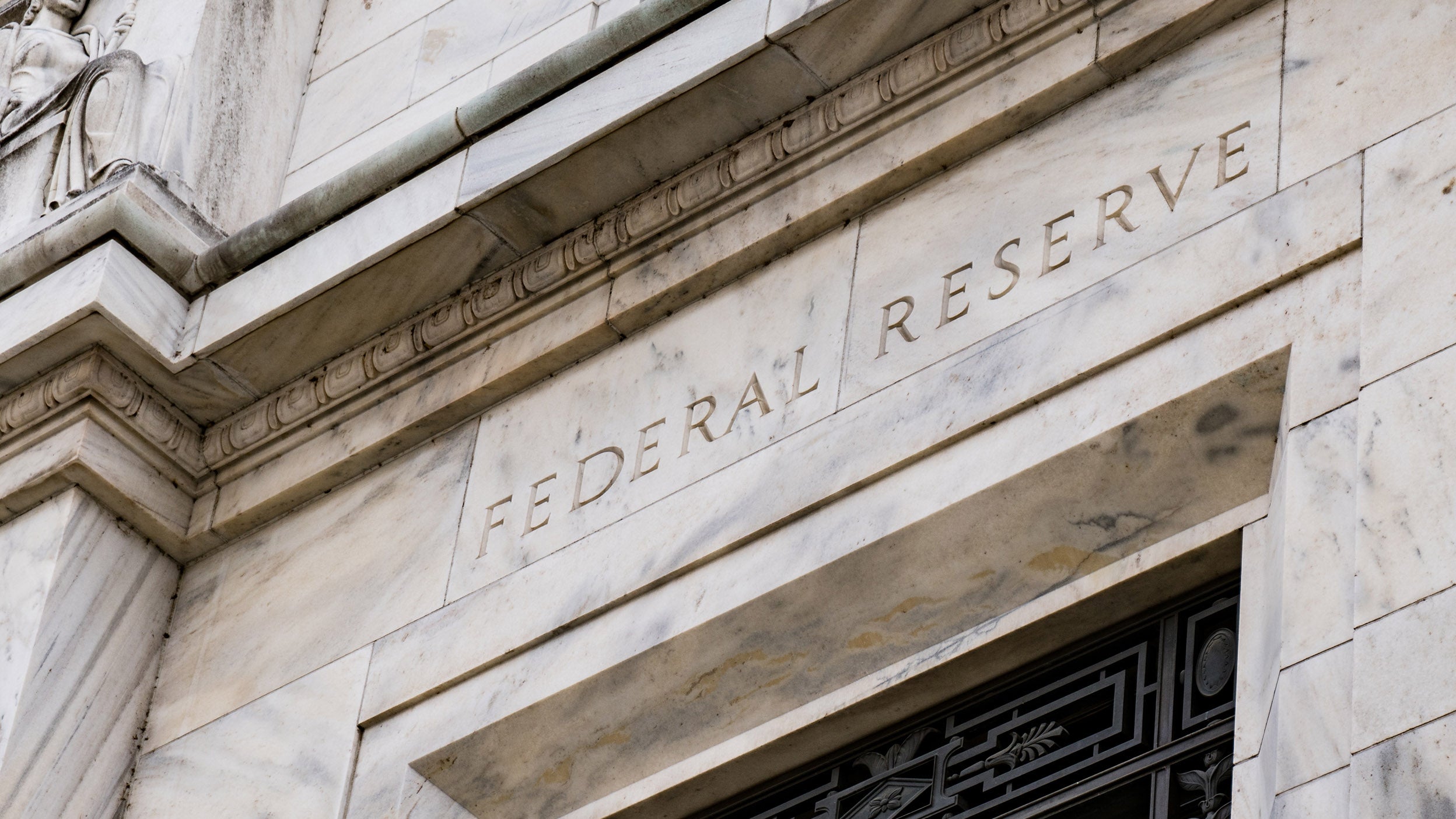
Global Fixed Income Strategy Monthly Report
In our regularly updated macroeconomic analysis we offer an outlook for interest rates and currencies – and look at which fixed income assets are favoured across a range of market environments.

In mid-June the Fed’s Federal Open Market Committee (FOMC) met to discuss the US economic outlook and to decide policy.
Although there was no change in the Fed policy’s two headline measures – the target range for the Federal Funds rate (0-0.25%) and the plan to continue purchases of US Treasuries and Mortgage Backed Securities (MBS) at rates of $80 billion and $40 billion per month respectively – there were two changes in non-headline areas.
The first change (Figure 1) was an increase of the Interest on Reserves (IOR) from 0.10% to 0.15% together with a similar increase of the rate for Overnight Reverse Repurchases (ON RRPs) from 0% to 0.05%.
These adjustments within the 0-0.25% Fed Funds rate target range have had the effect of stopping the gradual downward drift in money market rates that had been occurring since January. They have also raised the effective Federal Funds rate from 6 basis points to around 10 basis points and the yields on short-term T-bills and repos for collateralized lending from close to zero to 5-6 basis points.
A by-product of these moves has been a surge in the placement of funds at the Fed’s ON RRP facility. Instead of earning nothing on ON RRPs, as previously, banks and money market funds can now earn 5 basis points.
As shown in Figure 2, in the days following the FOMC announcement, ON RRPs jumped from around $500 billion to $750-800 billion. On Tuesday, 6th July, for example, the New York Fed accepted offers of $772.6 billion from 66 counterparties.
From a quantitative viewpoint we are witnessing a process whereby the Fed seems to be giving with the left hand and taking away with the right.
On the asset side its purchases of Treasuries and MBS are creating new deposits in the banking system of $120 billion per month, but on the liability side the reverse repos (RRP) transactions shift some of the liabilities on the Fed’s balance sheet from bank reserves to RRPs.
To understand what is going on here it is important to distinguish between (a) commercial bank deposits, which constitute the bulk of the money supply and are used for the purchases of assets, goods and services in the economy and (b) commercial bank reserves, which are one of the counterparts to the Fed’s asset purchases and loans.
When the Fed purchases securities it injects funds into the economy; deposits held by firms and individuals increase. This is the monetary fuel for economic activity and spending. Currently, these deposits are growing at about $1.44 trillion per annum due to the Fed’s asset purchases of $120 billion per month. There has been no change in this rate of money creation.
Initially, the Fed’s purchases and the new deposits in the banking system are matched by an increase in bank reserves at the Fed. However, whereas the Fed can precisely control the size of its assets, it cannot control the composition of its liabilities.
If the public wants to hold more banknotes or if the federal government chooses to hold more deposits at the Fed or if money market funds wish to place overnight funds, with the Fed in RRP accounts, in each case these funds will be deducted from the banks’ reserve deposits.
It is the last of these that has happened following the increase in the ON RRP rate to 5 basis points. In other words, banks’ reserves have decreased, but RRPs have increased by a matching amount. In no sense has money in the hands of the public – firms or households – been reduced.
The second, non-headline change came with the release of the so-called ‘dot plot’, contained in the Summary of Economic Projections (SEP), in particular the assessment by FOMC members of the likely level for the Fed Funds rate over the next two years.
Compared with the last edition of the release in March, the median expectation of the 18 members for the Fed funds rate in 2022 had moved up from 0-0.25% to 0.5-0.75%.
In contrast, with the Fed’s public rhetoric of no change in the Fed Funds rate until at least the end of 2023, this implied two rate hikes in 2022, bringing much nearer the lift-off for interest rates and implicitly the tapering of Fed asset purchases. It was this that triggered a series of market reactions rather than the adjustment of money market rates discussed above.
The immediate and most volatile reaction was a rise of the Treasury yield curve with 2-year Treasury yields rising from 0.16% to 0.26% and the 10-year Treasury yield rising from 1.49% to 1.59% over the next day.
However, 10-year yields then fell all the way back to 1.35% by 21st June rising again to 1.49% on 22nd June. In effect, the yield curve flattened as a result of the upward movement at the short end.
Elsewhere in financial markets, equities temporarily sold off, especially value stocks, along with non-dollar currencies, commodities such as base and precious metals, and crypto currencies.
The problem with all these short-term movements and the attempt to interpret them is that they assume that Fed views or policies on interest rates are the last word on monetary policy, with rate hikes meaning tighter policy and rate cuts meaning easier policy.
However, the empirical evidence from numerous case studies around the world and covering different eras is that quantitative changes in the stock of money held by the non-bank public are far more important over any extended period in shaping the inflationary backdrop than interest rates – or for that matter, what happens to reserves on central bank balance sheets.
Having just experienced fifteen months of exceptionally strong growth of money (M2), the US economy is about to witness the results of that monetary explosion in terms of rapidly strengthening economic activity and higher inflation.
Consequently, even if the Fed raises rates modestly over the next two years, what happens to inflation will depend far more on money than on interest rates. Typically, when an economy is recovering strongly, the demand for credit also rises strongly meaning that interest rates can rise in parallel with nominal spending without exercising any restraint.
If this happens over the next two or three years the recent short-term, knee-jerk reaction of bond, credit and equity markets to the latest Fed policy release will be turn out to have been exceptionally short-sighted.
My view has been that the Fed would ultimately need to start tapering its asset purchases and raising interest rates ahead of their publicly announced schedule – primarily because of the impact on the economy and on inflation expectations of the enormous monetary expansion between March 2020 and May 2021.
Inflation, in my view, will come in two parts: a transitory element during the re-opening in 2021, and a more persistent element due to the prolonged period of rapid money growth which will only show up in 2022-23.

In our regularly updated macroeconomic analysis we offer an outlook for interest rates and currencies – and look at which fixed income assets are favoured across a range of market environments.

Welcome to Uncommon Truths, Paul Jackson and Andras Vig’s regular in-depth look at the big topics impacting markets.

Welcome to our Tactical Asset Allocation hub. Here you’ll find a selection of the most recent research from Invesco Solutions. Read our latest analysis that covers market strategy and opportunities across various asset classes.
The value of investments and any income will fluctuate (this may partly be the result of exchange rate fluctuations) and investors may not get back the full amount invested.
Data as of July 2021 unless stated otherwise.
This document is marketing material and is not intended as a recommendation to invest in any particular asset class, security or strategy. Regulatory requirements that require impartiality of investment/investment strategy recommendations are therefore not applicable nor are any prohibitions to trade before publication. The information provided is for illustrative purposes only, it should not be relied upon as recommendations to buy or sell securities.
Where individuals or the business have expressed opinions, they are based on current market conditions, they may differ from those of other investment professionals, they are subject to change without notice and are not to be construed as investment advice.